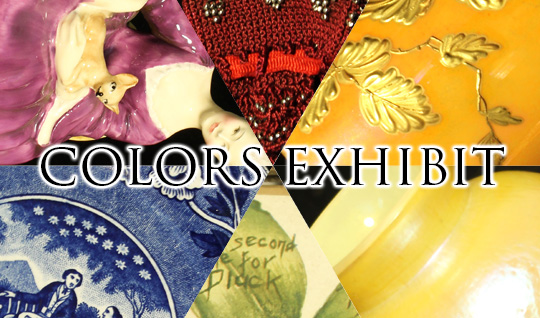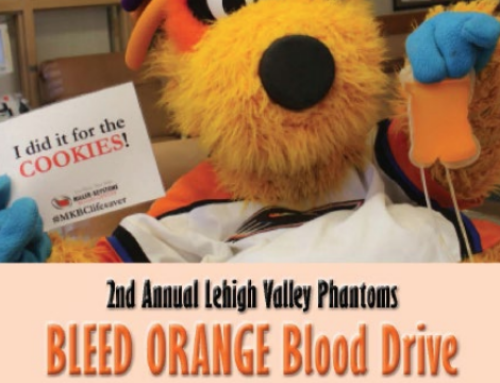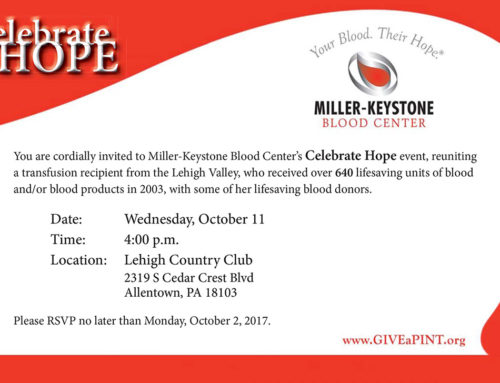 Colors, Portraits, and Main Street Views: Three Perspectives, One Story
Colors, Portraits, and Main Street Views: Three Perspectives, One Story
It is an exciting time to visit Historic Bethlehem Museums & Sites. Right now with the Pass Into History admission ticket, guests have the opportunity to experience three unique facets of Bethlehem’s past.
The first four site exhibition, Colors, is now open through October 26 at the Kemerer Museum of Decorative Arts, the Moravian Museum of Bethlehem, the 1810 Goundie House, and Burnside Plantation. This special exhibition feature four sub-exhibits: The Symbols of Colors at the Kemerer Museum, Kaleidoscope at the Moravian Museum, an exploration of Black, White, and Monotone at the 1810 Goundie House, and an exploration of natural dyes at Burnside Plantation.
The Symbols of Colors, uses the visible spectrum; red, orange, yellow, green, blue and purple, as to highlight colorful everyday objects, in order to explore why certain sentiments are related to each of those colors. Colors can become symbols of a feeling or idea, and when used in design, colorful objects can evoke emotional responses and invite a myriad of personal and social associations.
While The Symbols of Colors exhibit located at the Kemerer Museum of Decorative Arts discusses objects of one specific color of the spectrum, the Kaleidoscope exhibit at the Moravian Museum of Bethlehem showcases artifacts that, like a kaleidoscope, represent a collage of colors. The various color combinations chosen by each artist highlight that there are countless ways to use and intertwine colors.
At the 1810 Goundie House, Colors is displayed in conjunction with Main Street Views, a photographic exhibition featuring photographs of Bethlehem streets from the mid-nineteenth century, when Main Street was a dirt road, through the mid-twentieth century when the street looked much like how we know it today. The images from our archives show how Bethlehem changed, including the development of buildings and homes that line its streets. View Bethlehem’s history inside the 1810 Goundie House, then stroll outside and see the photographs in real life on Bethlehem’s Main Street. Visit during Visitor Center hours to learn about early Main Street, as well as the use of monochromatic tones such as black and white in clothing and every day objects.
Tours of the farm house at Burnside Plantation will highlight the use of color and natural dyes throughout the collections. In particular, guests will learn about the significance of the yellow used on the walls of the home’s first level, the production and use of natural dyes, and the dye house that once stood in Historic Bethlehem’s Colonial Industrial Quarter.
Whether it’s the swoosh of a paint brush, the click of a camera, or the upload from a smart phone, capturing images of ourselves has a longstanding tradition. Regardless of the medium, the objective of portraiture is to encapsulate the sitter’s personality or mannerisms. Historically, fine art examples were once sought out by the wealthy but with the advent of photography, portraits transformed from aristocratic pomp to mass consumption.
Portraits examines the characteristics of portraits by drawing attention to its various forms, styles and sizes. Portraiture from the Historic Bethlehem Museums & Sites collections, on display through November 16, will include painted miniatures, silhouettes, carte-de-vistes, cameos, daguerreotypes and tintypes and other depictions of portraiture featured in decorative arts. Ideas of capturing the self will also be discussed with its transformation to today’s version, “the selfie.”
Moving through the exhibition, visitors experience a chronological presentation of two key themes; fine art and photography. First, visitors will explore examples of fine art portraiture; ranging from large paintings to decorative arts; as noted with vases, miniatures and even pieces from the Elizabeth Johnston Prime dollhouse collection, also featured at the Kemerer Museum of Decorative Arts. As photography advances, the exhibition shifts into an exploration of portraits as they change from wealthy, aristocratic spectacle to a mainstream and accessible means of creating memories.
In addition to objects from the collections of Historic Bethlehem Museums & Sites, Portraits features three pieces from The Burns Archive, located in New York City. Founded by Dr. Stanley B. Burns in 1977, The Burns Archive is the home of a vast collection of medical, historical, and memorial photography collected by the award winning author and New York City ophthalmologist. A long time passion, historic photography and medical history owes much of its recent growth in no small part to the research of Dr. Burns, who played a key role in the rediscovery of postmortem photography and nineteenth century mourning practices.
Dr. Burns is currently the on-set Medical, Historical, and Technical consultant for the HBO series, “The Knick” and is about to release his 44th book titled Stiffs, Skulls & Skeletons: Medical Photography and Symbolism which is set for release in October of 2014.
To complement to the exhibit, we welcome visitors to have their photograph taken in front of the ceiling to floor backdrop. Just make sure to use that sepia filter!
Guests interested in visiting Historic Bethlehem Museums & Sites can find out more by visiting HistoricBethlehem.org or by calling 1-800-360-TOUR. The Pass Into History starts at $12 per person for adults, and $6 for children 3-12. The Kemerer Museum of Decorative Arts, Moravian Museum of Bethlehem, and Burnside Plantation are open to the public for guided tours from 11am-4pm every Friday-Sunday.
Historic Bethlehem is a not-for-profit institution that brings to life three centuries of American history. Historic Bethlehem tells the story of a small town of great influence, home to some of our nation’s earliest settlers, to America’s first municipal water pumping system, and to one of the world’s greatest industrial companies. Historic Bethlehem is located in Eastern Pennsylvania, only a 1.5 hour drive from Philadelphia to the North and 2 hours west of New York City. Historic Bethlehem is an Affiliate of the Smithsonian Institution and is distinguished as a National Historic Landmark District for Historic Moravian Bethlehem. For more information please call 610-691-6055 or visit www.historicbethlehem.org.


Leave A Comment